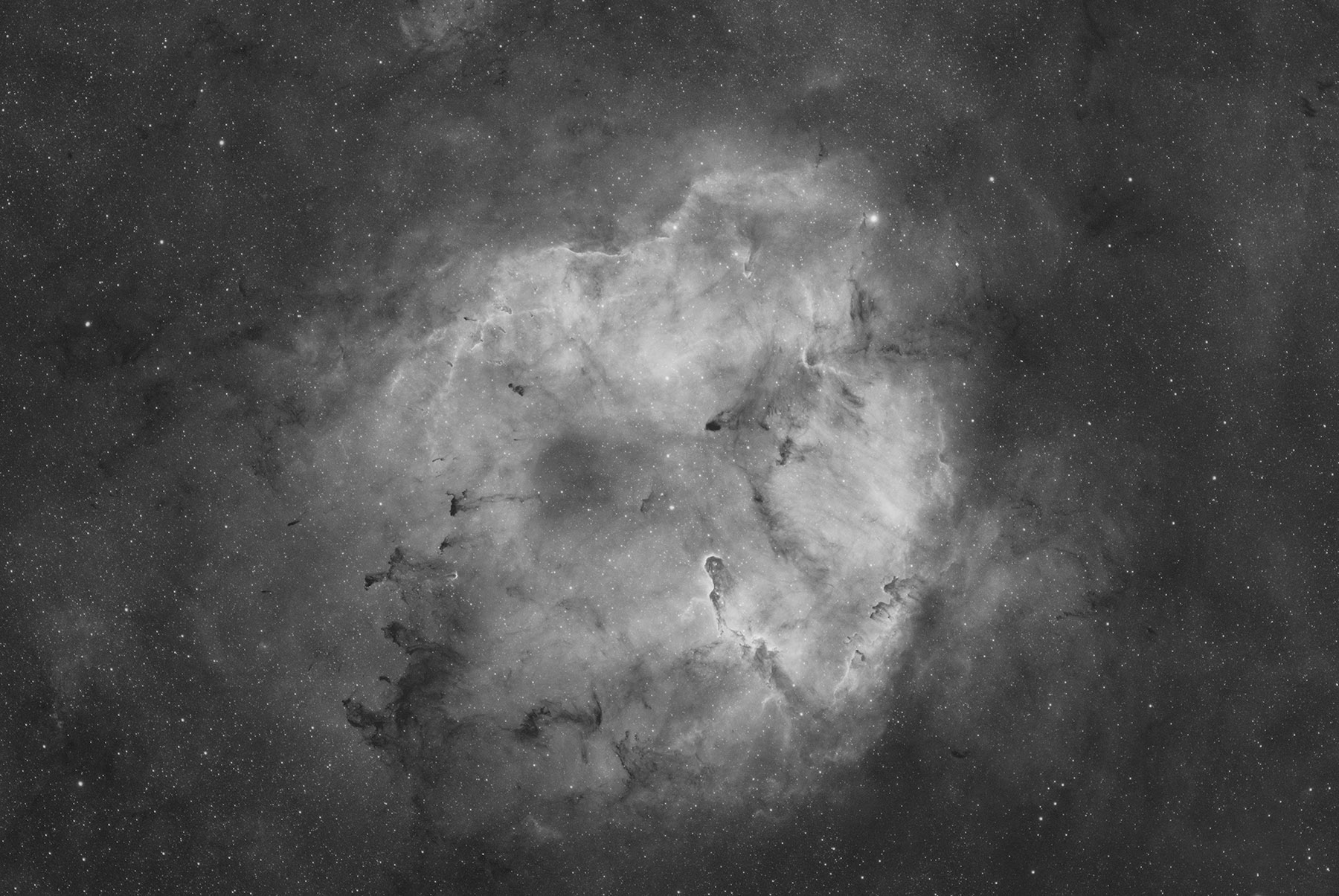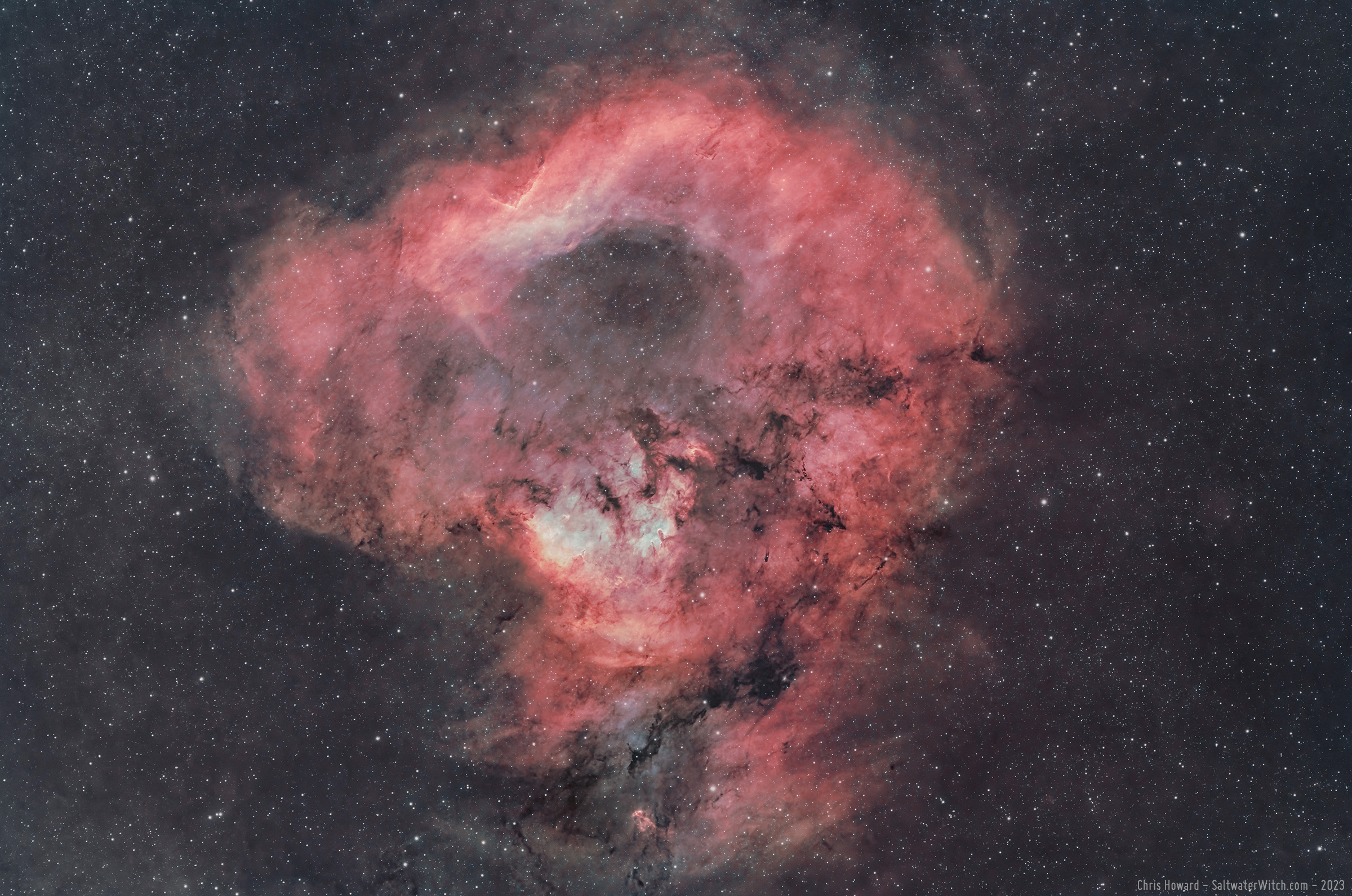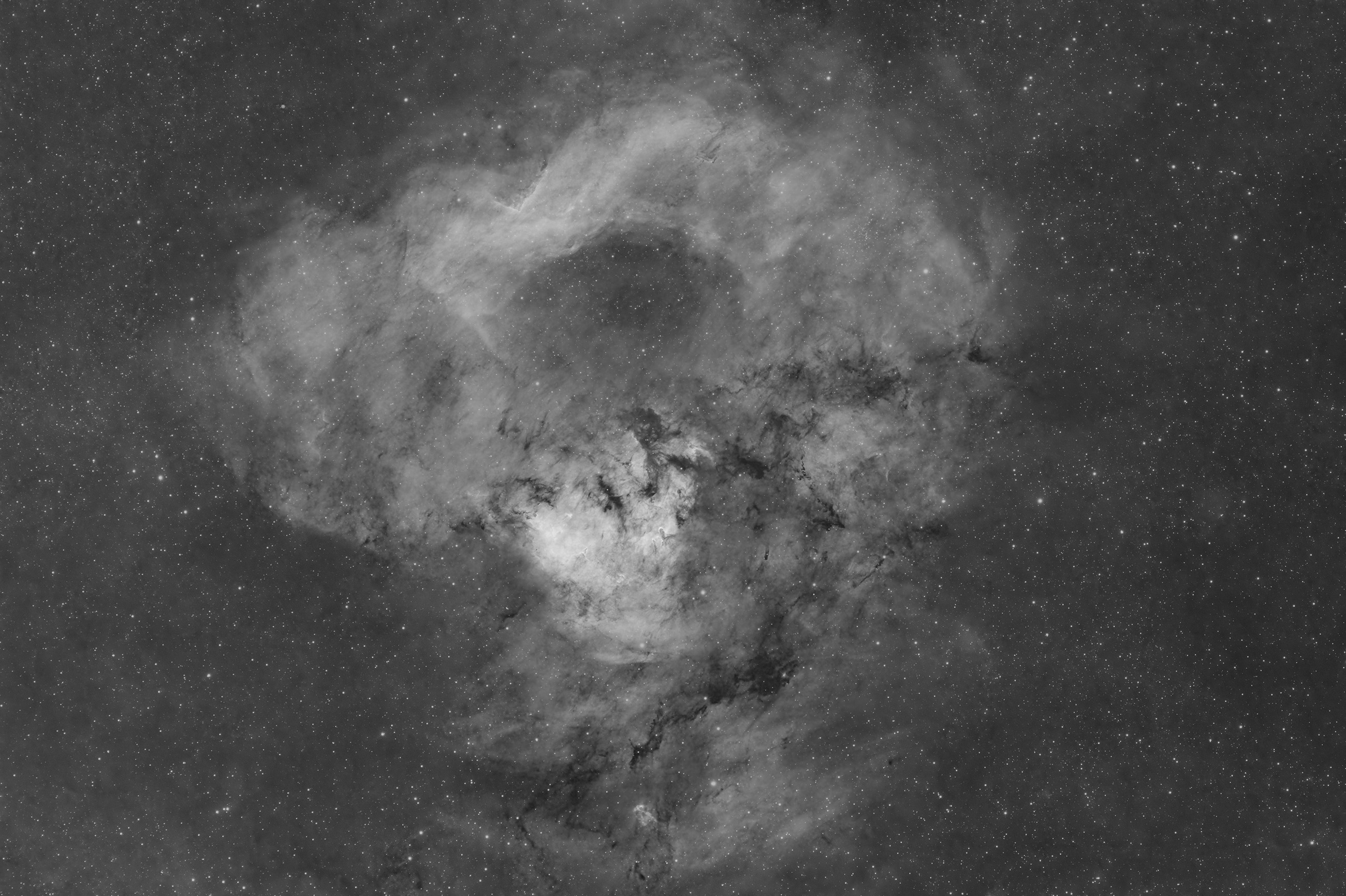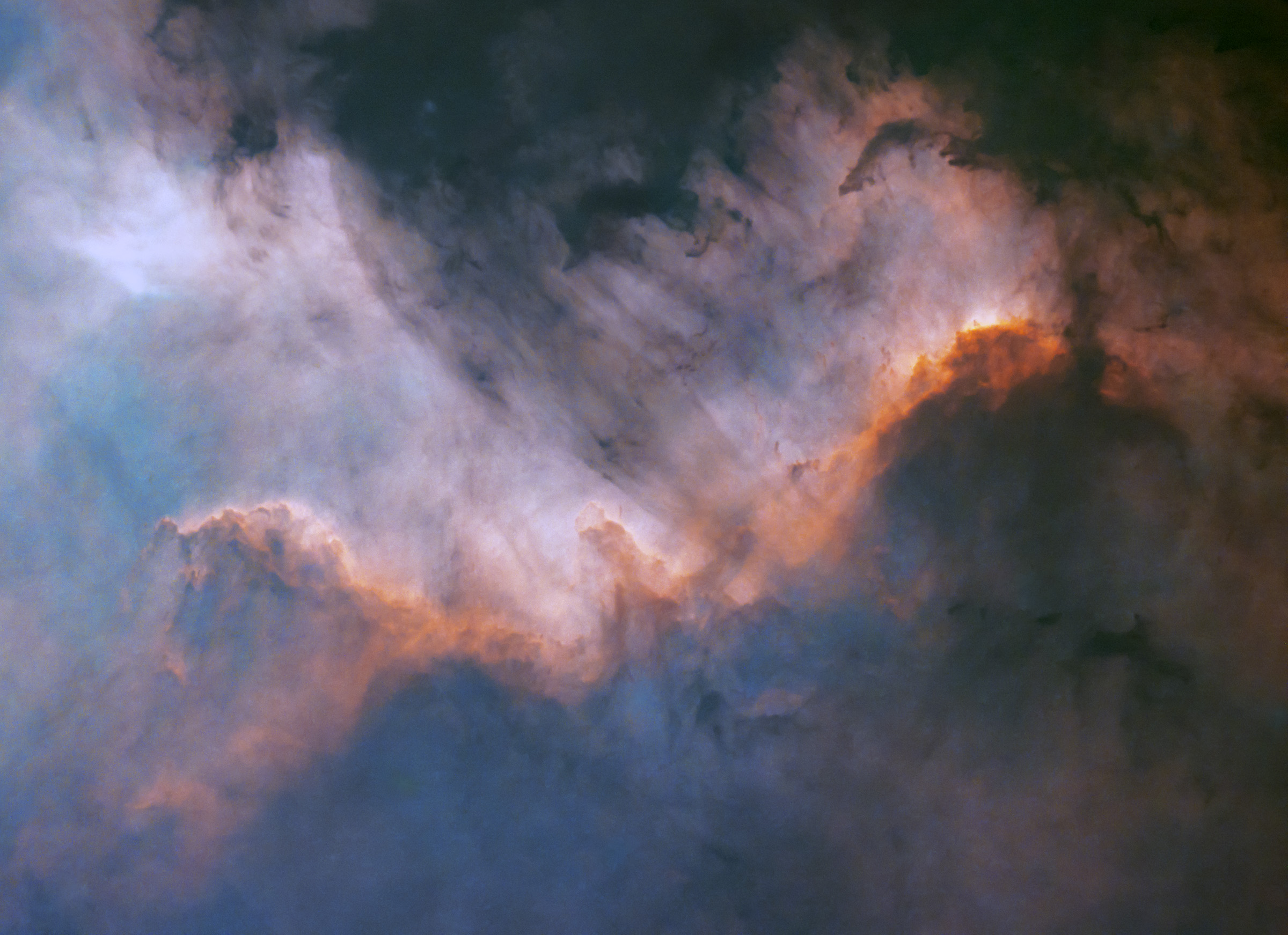Pretty good for an 80% moon
From last night’s narrowband imaging run: IC 1396 is a bright HII region over 2000 lightyears away in Cepheus, illuminated and ionized by the very energetic multi-star system HD 206267 (that’s the brightest star in the center of the image). The massive star, top right-ish, is a red supergiant, “the Garnet Star”, μ Cephei (mu Cephei). Mu Cephei is almost 100,000 times brighter than our star, the Sun, and it's over a 1000 times larger. Imaging notes: 61 x 300-second exposures stacked in PixInsight, camera: ZWO ASI2600MM-Pro cooled to -10C, Antlia 3nm Hydrogen-alpha filter. Even with an 80% waning moon, last night turned out well.
Posted October 3, 2023
NGC 7822 in Ha + OIII
Playing around with pixelmath in PixInsight with my narrowband data of NGC 7822, Cederblad 214, an emission nebula in Cepheus, about 3,000 lightyears away. This is Hydrogen-alpha (Ha) combined with Oxygen 3 (OIII) data I captured over several weeks, made up of 52 x 300-second exposures of Ha and 32 x 600-second (10 minute) exposures of OIII. Gear notes: William Optics Space Cat 51 (250mm FL @ f/4.9), ZWO ASI2600MM-Pro monochrome camera cooled to -10C, Sky-Watcher EQ6-R Pro mount, William Optics 32mm/120mm FL guide scope + ZWO ASI290MM-Mini guide camera.
Target Notes: NGC 7822, Cederblad 214, SH2-171 (the brighter emission nebula core) as well as the star cluster Berkeley 59. There are several long chains and clumps of dark nebulae, including LDN 1268, 1275, Dob 3637, 3627, 3623, many more. Nestled in that large band of dark nebulae toward the bottom is the reflection nebula GN 23.56.1. The very small circle of gray at the top left, blending in but dimmer than the nearby stars, with less contrast, is the planetary nebula Abell 1 (PLN 119+6.1). Find all of this—the nebulae and star forming complex in Cepheus near the edge of Cassiopeia.
Posted September 20, 2023
Narrowband filter set complete
I already have a 2 inch 3-nanometer Hydrogren-alpha (Ha) filter, and today UPS dropped off the other two, Sulfur 2 (SII) and Oxygen 3 (OIII) filters, both 3nm narrowband. It's almost as if my birthday is a week away. (A little more than a week, actually).
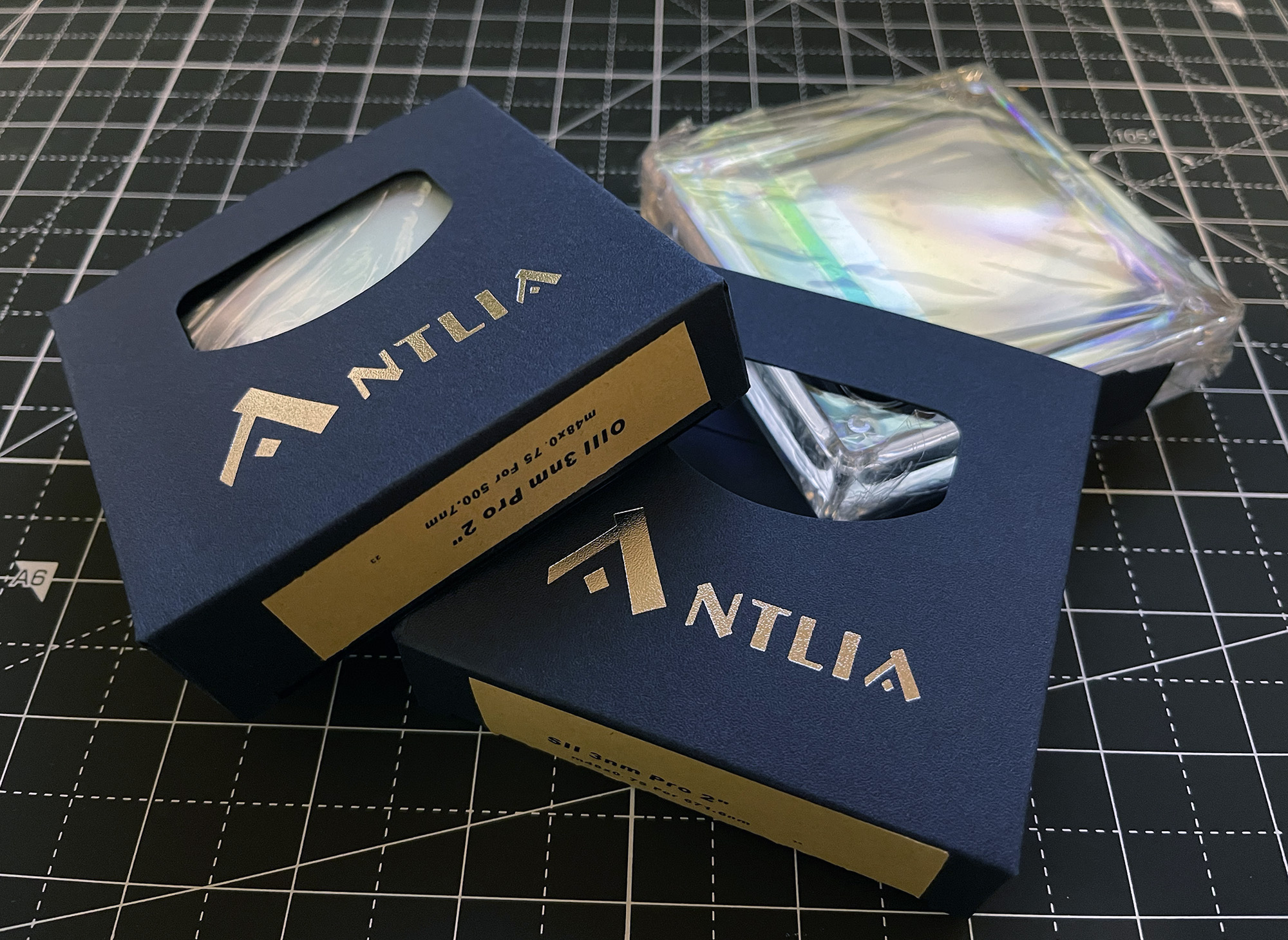
Posted August 23, 2023
First Light with the ZWO ASI2600MM Pro mono camera
June and July consistently delivered terrible weather for astronomy—here in the northwest US. There was one clear-ish night somewhere in the middle of the waves of thunderstorms, torrential rain, and general cloudiness, but on that one night we were close to a full moon and a few hours of clear skies amid the weeks of cloud that followed that night wasn’t worth the effort. So I waited for the next opportunity. Last night, August 11th, I set up the Sky-Watcher mount (EQ6-R Pro) with the William Optics SpaceCat and my new camera, which I bought in June.
Here's the result of my first imaging run with the ZWO ASI2600MM Pro mono camera, cooled to -10C, Antlia 3nm Hydrogen-alpha Pro Imaging filter (2 inch). 52 x 300-second sub-exposures with minimal calibration (bias & dark, no flat frames). The ASI2600 is built around the monochrome version of the Sony IMX571 APS-C sized sensor, and although you can get away with 36mm unmounted filters, I went all the way to 2 inch mounted narrowband filters. And not even a hint of vignetting. I didn't use flat frames when stacking. So, am I impressed with the ZWO ASI2600MM Pro? Oh yeah.
I started narrowband imaging about ten years ago with Atik mono CCD cameras, moved through a couple QHYs, and settled on the ZWO ASI1600MM Pro—the smaller, older generation of this ASI2600. I've been using the 1600 for four or five years, and it was time to upgrade. The 2600 has been out for a little while—I'm not new to this camera but I'm really glad I made the jump.
Target Notes: NGC 7822, Cederblad 214, SH2-171 (the brighter emission nebula core) as well as the star cluster Berkeley 59. There are several long chains and clumps of dark nebulae, including LDN 1268, 1275, Dob 3637, 3627, 3623, many more. Nestled in that large band of dark nebulae toward the bottom is the reflection nebula GN 23.56.1. The very small circle of gray at the top left, blending in but dimmer than the nearby stars, with less contrast, is the planetary nebula Abell 1 (PLN 119+6.1). Find all of this—the nebulae and star forming complex in Cepheus near the edge of Cassiopeia.
Click for full view:
Posted August 12, 2023
New Camera - ZWO ASI2600MM-Pro monochrome
It's a big jump from the ASI1600MM-Pro, going from a 4/3s size sensor to an APC-C at 26MP, which requires larger LRGB and narrowband filters. They're a bit pricier, but I have decided to go all the way to 2" mounted filters (or 50.4mm unmounted), anticipating a future jump to a full frame monochrome astro camera.
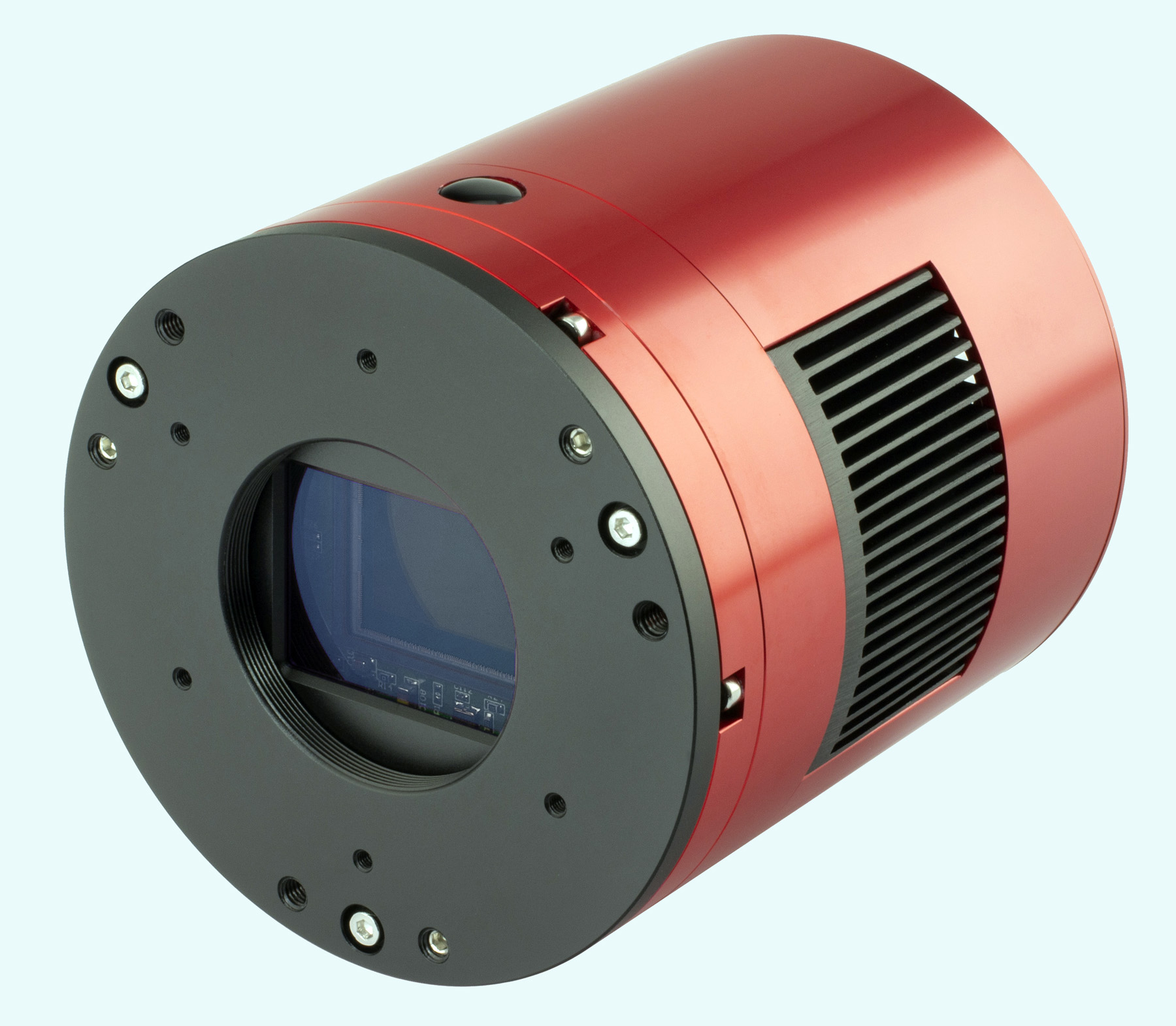
Posted June 29, 2023
Sadr Region (Northeast)
Sadr Region (Northeast) in Cygnus, with a batch of HII regions and dark nebulae, including IC 1318A, LBN 251, DWB 82 (all refer to the large, bright triangular mass at the top right), scattered lumps of dark nebula, including LDN 894, 892, 891, Dobashi 2429, 2468, 2449, et. al. This is probably it for a little while. We have five or six days of rain storms headed our way, and a waxing moon right along with it.
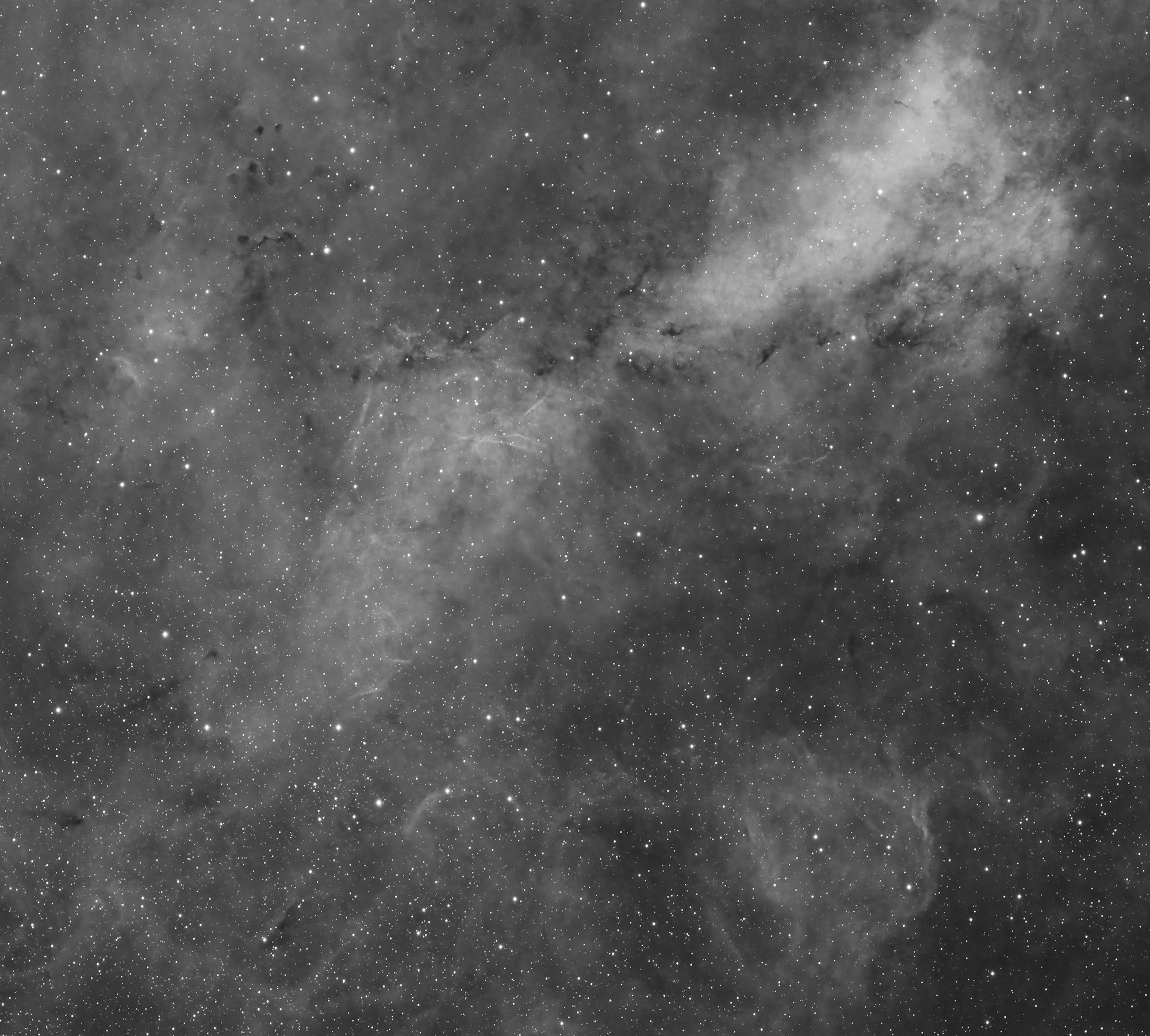
Posted June 23, 2023
Dual refractors
Setting up two refractors, the William Optics GT81 (right) and William Optics SpaceCat 51 (left). I'm running monochrome with 3nm filters on the SpaceCat and RGB color on the GT81. It's beautiful out there now, but into the evening the forecast is calling for a solid cloud cover. I'll be ready if there's a decent break in the clouds!
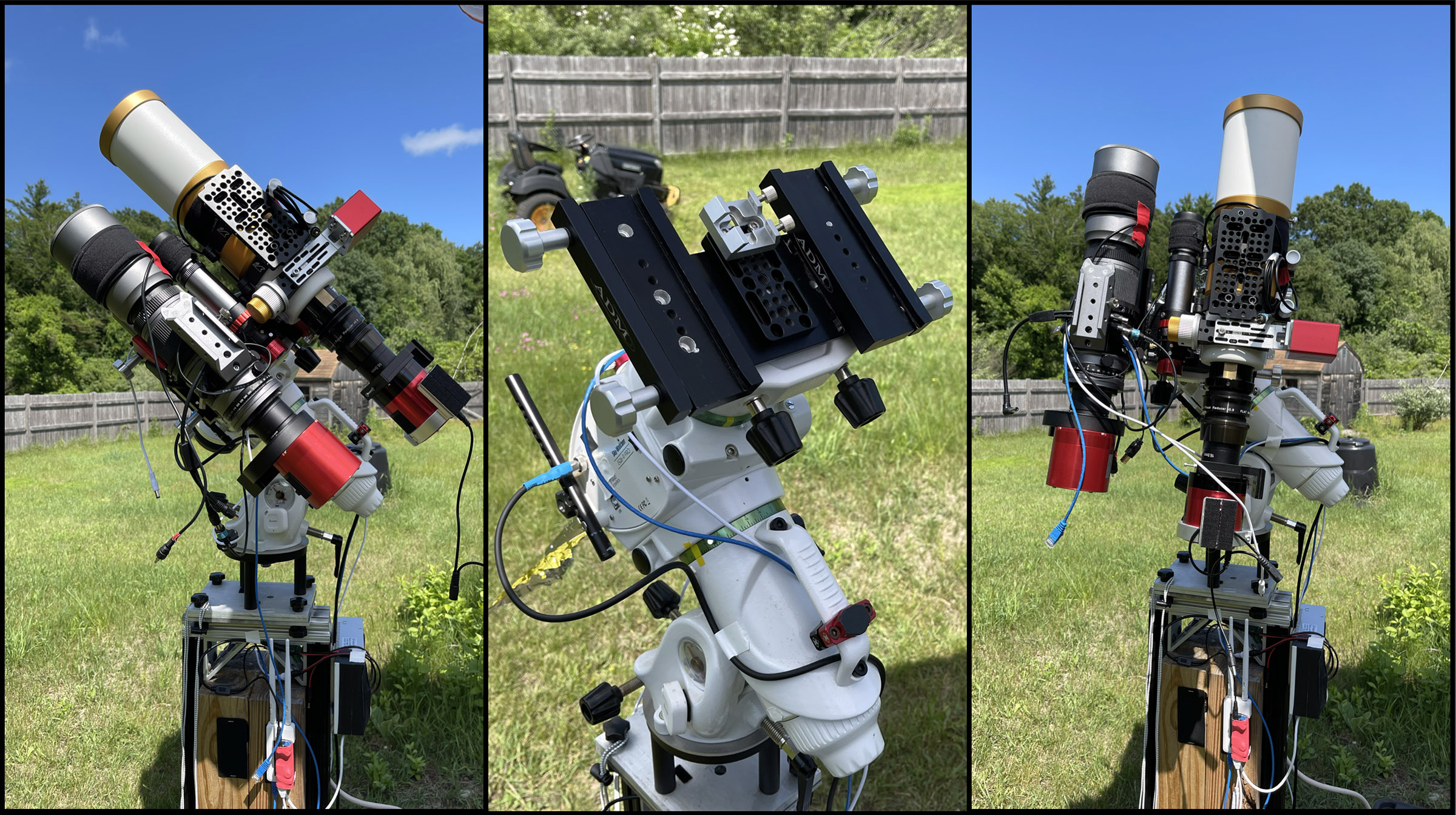
Posted June 19, 2023
Starless NGC 7000 Narrowband
The Cygnus Wall in NGC 7000 (Caldwell 20), the North America Nebula in the constellation Cygnus. These clouds of molecular hydrogen and oxygen are about 2600 lightyears away from us, and to provide some scale, this frame is about a hundred lightyears from one side to the other, or about 600 trillion miles or 950 trillion kilometers. Notes: stars removed with StarNet2 to highlight the softer wisps of dark nebulae scattered in front of the bright emission nebula beyond.
